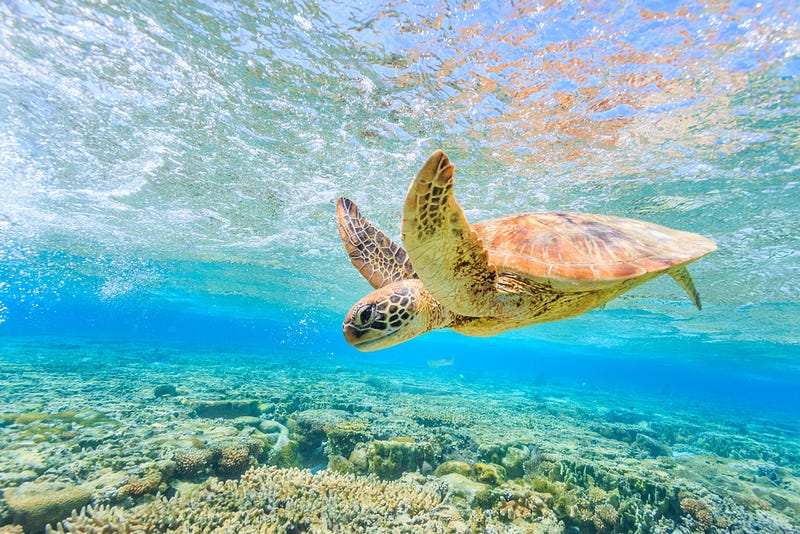As Temperatures Rise, So Do Female Sea Turtles
By Maya Homan, Journalism, 2023

American news sources dubbed 2018 the “Year of the Woman.” In 2019, certain members of the animal kingdom are following suit, albeit in an unexpected way: on beaches across the globe where sea turtles lay their eggs, the hatchlings are skewing almost entirely female.
Sea turtle eggs must incubate in the sand for anywhere from 45 to 80 days, depending on the species. Unlike in humans, in which a baby’s gender is determined by the 23rd chromosome in a sperm cell, the environment plays a pivotal role in determining the gender of reptiles and certain species of fish. Eggs that incubate at roughly 84˚F have an even mix of genders when the baby sea turtles hatch, while temperatures below 81.9˚F skew almost entirely male, and temperatures above 87.8˚F skew almost entirely female. Now, recent studies from Cape Verde, Australia, California, and Florida are reporting that recent hatchlings are dominated by female turtles. The culprit? Climate change.
Unlike in humans, in which a baby’s gender is determined by the 23rd chromosome in a sperm cell, the environment plays a pivotal role in determining the gender of reptiles and certain species of fish.
The hottest year in recorded history was 2016, and 18 of the 19 hottest years have been documented in the 21st century. Ocean ecosystems in particular are very sensitive to temperature changes. The extreme ratio of female to male turtles could have a disastrous effect on the sea turtle population. Females make up 87 percent of the current adult sea turtle population, and the ratios are only growing more extreme, with some studies counting 116 females for every one male hatchling. Because sea turtles do not typically mate until age 35 to 40, the effects of this particular phenomenon may not be felt for years.
However, there are conservation groups dedicated to tackling the issue. In Australia, the Raine Island Recovery Project has been studying regional trends among Australia’s green turtles and working to protect turtles who come ashore to lay eggs. Researchers in Cape Verde have gone a step further by retrieving eggs laid by sea turtles and relocating them. Separating the eggs into smaller clusters helps ensure that they incubate at lower temperatures and scientists have also tried installing sprinkler systems to artificially regulate the temperature. Marine biologists hope that human intervention will be able to partially restore the balance.
DOI: 10.1016/j.cub.2017.11.057
DOI: 10.3354/meps1296
